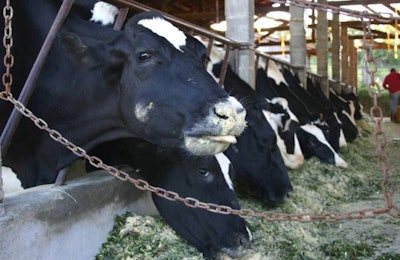
Dairy producers could save about one-third of the costs of milk production by opting to produce their own feeds, according to Kenya’s agriculture chief administrative secretary, Andrew Tuimur.
Speaking at the 14th African Dairy Conference recently, he also urged Kenya’s dairy farmers to conserve fodder, reported The Star.
These two measures could cut the total cost of milk production, currently averaging KES21 (US$0.21) per liter, to KES14 per liter.
“Our target is to bring the cost to KES14 to ensure dairy farmers benefit. And if one can sell a liter at KES35, then they will have made optimum profit,” he said.
Owing to small farm sizes, 60 percent of Kenyan milk output comes from zero-grazed cattle, and the additional feed and labor required mean total costs of production per liter are twice as high in Kenya and in neighboring Uganda.
However, the state’s government has been encouraging farmers to embrace new technology and to produce their own feeds, said managing director of the Kenya Dairy Board, Margaret Kibogy.
Development of the dairy sector in recent times has led to the commissioning of 10 milk processing plants within the past three years, according to Tuimur.
Also at the African Dairy Conference, the more than 600 delegates were urged to focus on production safety and efficiency to maintain a competitive edge in their businesses, The Star previously reported.
“We need safe and more sustainable products to feed the growing population,” said Caroline Edmond, director general of the International Dairy Federation.
One recent innovation that has greatly helped one Kenyan dairy farming group is the introduction of a solar-powered milk cooling system.
Because of a lack of facilities and unreliable power supply, dairy cow owners had to spend time trying to sell their surplus production after each milking — sometimes without success, and the milk had to be given away.
But in 2015, a solar-powered milk cooling plant was opened in the village of Kibumbu, reports Business Day. Dairy farmers take all the milk surplus to their family’s requirements to the plant, where it can be safely stored without going off. At the end of the month, they receive payment based on the volume of milk they have delivered.
With the view to support livestock exports, Kenya’s government has recently announced plans to create 50 new feedlots across the country.

















